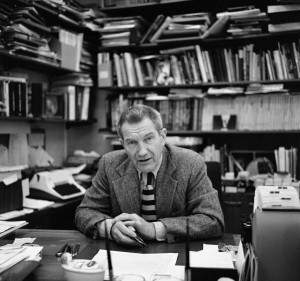 We recently lost one of photography’s greats. There have only been a handful of people who have significantly shaped photography and influenced a generation of photographers.
We recently lost one of photography’s greats. There have only been a handful of people who have significantly shaped photography and influenced a generation of photographers.
Alfred Stiegliz was one. Alexis Brodovitch was another. As the founder and director of the Design Laboratory and later as art director of Harper’s Bazaar, Brodovitch shaped the careers of Richard Avedon, Irving Penn and many household names in commercial photography of the late 20th Century. Art Kane said, “He taught me to be intolerant of mediocrity.” Fashion photographer Hiro commented, “I learned from him that, if when you look in your camera, you see an image you have ever seen before, don’t click the shutter.” By all accounts, Brodovitch was a tough task- master.
In June we lost another great. Bob Gilka was Director of Photography at National Geographic for 27 years. He was loved, feared and even hated by a fringe group who had crossed him in some way. He was fiercely devoted to those who demonstrated loyalty to the Geographic “family” but heaven help you if you crossed that line. His support for Geographic photographers was legendary. He guided their assignments through sometimes harsh but always objective criticism and when praise was given, you knew he really meant it.
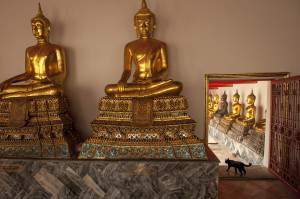 Bob Gilka ensured that the photographer in the field always had what was needed to complete the job whether it necessitated buying (as opposed to renting) a Land Rover or a Cessna and he fully supported the expense claim when it came in. He steered National Geographic Magazine through its golden years when circulation rose from 2 million to over 10 million.
Bob Gilka ensured that the photographer in the field always had what was needed to complete the job whether it necessitated buying (as opposed to renting) a Land Rover or a Cessna and he fully supported the expense claim when it came in. He steered National Geographic Magazine through its golden years when circulation rose from 2 million to over 10 million.
Bob Gilka was a man I had the privilege to personally know and work with. When I first met him in 1979, he terrified me. The sign on his door at Geographic headquarters in Washington DC read, “Wipe your knees before entering.”
To this day I still clearly recall his first words to me: “I have on my desk the world’s biggest Rolodex (database – this was before desktop computers) of photographers. Why do I need another?” It was an intimidating challenge.
I had been a full-time professional photographer for less than 4 months but like many neophytes, I thought I was definite National Geographic material. Looking back on the experience and at the portfolio I took in to show him, I marvel that he didn’t immediately show me the door.
He stressed how he looked for photographers who could walk down the dullest street and come back with exciting photographs. He started out as a photojournalist and he wanted to see photographs that he couldn’t have taken himself.
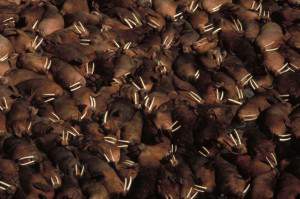 Thankfully, I had an ace up my sleeve.
Thankfully, I had an ace up my sleeve.
I had done my homework, looked at back issues of National Geographic magazine and I was able to pitch a story on an area of Northern Pakistan where access was difficult both politically and physically and had not been covered in the magazine for decades. My old friend Galen Rowell told me he was going to cover an area of Kashmir on the border of Pakistan and India and my idea was to contrast this with an area to the far west traversed by the newly constructed Karakoram Highway.
I left Bob Gilka’s office feeling less than optimistic but he said he would call me with his decision. Sure enough, about a month later he called and said, “What film do you want for the Pakistan story?”
I was sent 300 rolls of Kodachrome, which was the film of choice at the time, and some rolls of High Speed Ektachrome. I hadn’t shot that amount of film in my whole life and now I was expected to shoot it in 3 months. I learned many lessons on that assignment and made some horrible mistakes. But I survived. Years later, Bob Gilka told me my portfolio hadn’t impressed him at all. Rather, what convinced him to offer me that first assignment was the fact that I had managed to get through his door. He figured if I had the initiative to do that, I could handle a Geographic assignment.
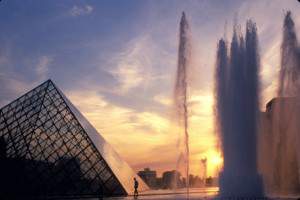 Bob Gilka retired in 1985 and he died last month at the age of 96 but to me and many other photographers his mentoring and guidance will never be forgotten.
Bob Gilka retired in 1985 and he died last month at the age of 96 but to me and many other photographers his mentoring and guidance will never be forgotten.
I learned a lot in those early years. Access to your subject is fundamental. If you can’t open doors, you can’t get the shots. Don’t stop shooting until you think you have it in the can. This is far easier in the digital age when you don’t have to be concerned about running out of film. None the less, there is no excuse for shooting erratically hoping to nail the shot. Shoot intelligently and question what it is you are trying to say.
One of the most important lessons I learned shooting film was to hone my technique to consistently come home with useable material. What a pity that today it’s so easy to rescue poorly captured photographs in Lightroom or Photoshop or leaning on Instagram to mask the faults. I would leave on a 3-month assignment at great cost to the magazine and have no idea what I had on film until I returned home. This discipline has stood me in good stead going into the digital world where good technique is just as important as ever.
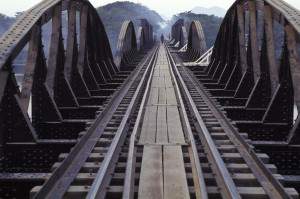 A Geographic photograph has to tell a story but it should also be a photograph that can stand on its own. The best photographs have both form and content. A newspaper photograph may have plenty of content but very little form and a fine art photograph can be all form with minimal content. Look at the work of Sebastião Salgado, William Albert Allard or David Alan Harvey. Their photographs are bursting with content but they can equally well be hung on a wall. This should be the goal of every documentary photographer.
A Geographic photograph has to tell a story but it should also be a photograph that can stand on its own. The best photographs have both form and content. A newspaper photograph may have plenty of content but very little form and a fine art photograph can be all form with minimal content. Look at the work of Sebastião Salgado, William Albert Allard or David Alan Harvey. Their photographs are bursting with content but they can equally well be hung on a wall. This should be the goal of every documentary photographer.
Paradoxically, despite having now been a professional photographer for over 30 years, I sometimes feel I have less confidence now than when I had my first meeting with Bob Gilka. For one thing, my standards are substantially higher. I am also much more self-critical as I constantly strive to make photographs that move people.
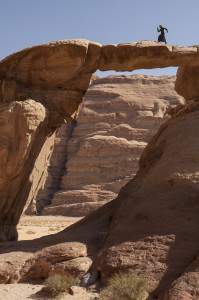 Yet, during this time I have become a far more intuitive photographer. Minor White wrote that you should prepare your mind like a blank piece of film and let the image impress itself on it. Put simply, you must let the photograph find you – something you can only do with practice and complete mastery of technique so that your equipment no longer stands in the way of your vision.
Yet, during this time I have become a far more intuitive photographer. Minor White wrote that you should prepare your mind like a blank piece of film and let the image impress itself on it. Put simply, you must let the photograph find you – something you can only do with practice and complete mastery of technique so that your equipment no longer stands in the way of your vision.
For years, my workshop students and colleagues have encouraged me to publish a book sharing my unique insights on creating evocative images that tell a story. And for years I have put doing so off. But as Bob Gilka’s recent passing highlights, our legacy as photographers not only rests with the images we make but also how we inspire and encourage others to create their best work – to share our passion. Looking back on all that Bob Gilka and many other great picture editors have taught me as well as upon my own experience shooting for magazines ranging from Geographic to Time, Life and dozens of the world’s largest travel magazines, I realise that I can’t put this off any longer. The time to share my lifetime of learning is now.
